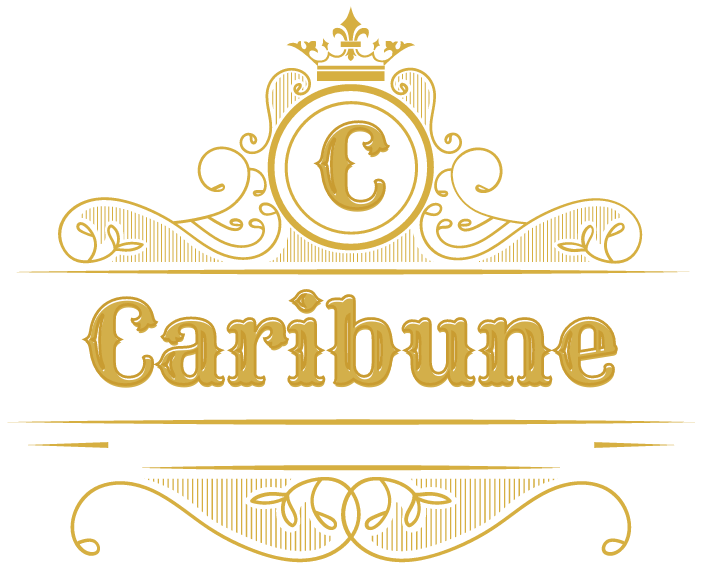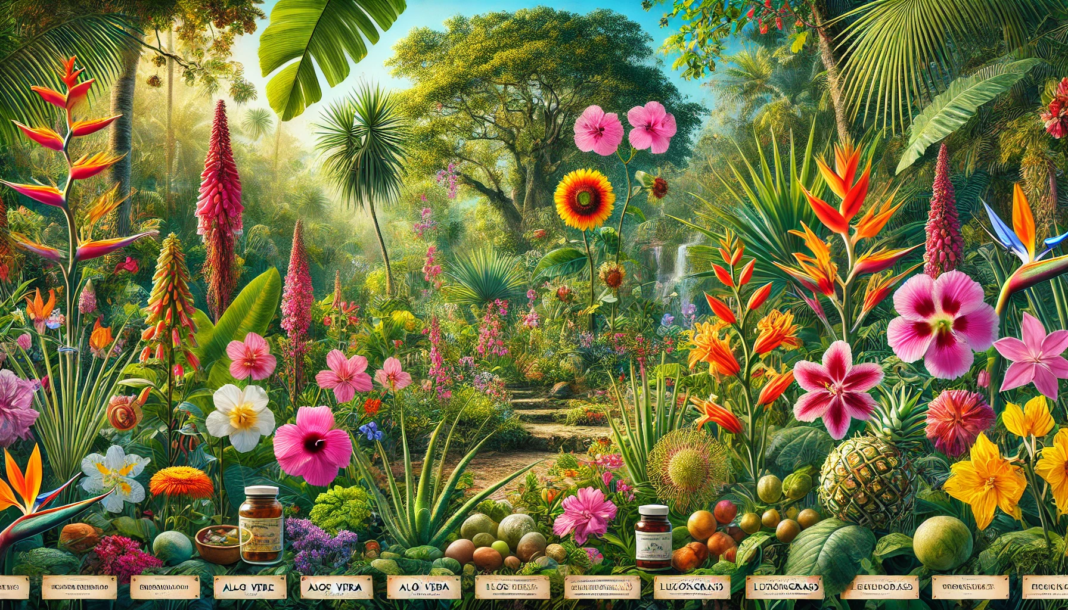The Caribbean is a region renowned for its rich biodiversity and lush landscapes. Among its natural treasures, the flora of the Caribbean stands out for its variety and beauty. The islands boast a wide range of plant species, from vibrant flowers and towering trees to essential medicinal plants.
This article explores the diverse plant life of the Caribbean, highlighting unique floral species, the importance of medicinal plants, and the ecological significance of the region’s vegetation.
Diverse Plant Life in the Caribbean
Tropical Trees and Palms
The Caribbean is home to a stunning array of tropical trees and palms, which form the backbone of the region’s lush landscapes. These plants not only provide vital ecological functions but also contribute to the cultural and economic life of the islands.
Royal Palm (Roystonea regia)
The Royal Palm is an iconic tree found throughout the Caribbean. Known for its tall, slender trunk and graceful, feathery fronds, the Royal Palm is a symbol of tropical beauty. It is commonly used in landscaping and as a decorative plant in gardens and public spaces.
Breadfruit (Artocarpus altilis)
The Breadfruit tree, introduced to the Caribbean from the Pacific Islands, is a significant food source for many communities. The tree produces large, starchy fruits that can be cooked in various ways. Breadfruit is highly nutritious and plays a crucial role in food security in the region.
Mahogany (Swietenia mahagoni)
Mahogany is a valuable hardwood tree native to the Caribbean. It is prized for its rich, reddish-brown wood, which is used in high-quality furniture and cabinetry. Mahogany trees are also important for their role in local ecosystems, providing habitat and food for wildlife.
Unique Floral Species
The Caribbean’s unique floral species add a vibrant touch to the region’s landscapes. Many of these flowers are endemic, meaning they are found nowhere else in the world. They are not only visually striking but also hold cultural and ecological significance.
Hibiscus (Hibiscus spp.)
Hibiscus flowers are among the most recognizable blooms in the Caribbean. Known for their large, colorful petals, hibiscus flowers come in various shades, including red, pink, yellow, and white. They are often used in traditional medicine, teas, and as ornamental plants.
Bougainvillea (Bougainvillea spp.)
Bougainvillea is a vibrant flowering vine commonly seen in Caribbean gardens and landscapes. Its bright, papery bracts, which come in colors like magenta, orange, and purple, make it a popular choice for decorative purposes. Bougainvillea thrives in the region’s warm, sunny climate.
Jamaican Orchid (Broughtonia spp.)
The Jamaican Orchid is a rare and beautiful flower endemic to Jamaica. These orchids are known for their delicate petals and vibrant colors, ranging from soft pinks to deep purples. They grow in the island’s mountainous regions and are a symbol of the island’s unique biodiversity.
Medicinal Plants
The Caribbean has a rich tradition of using medicinal plants for healing and wellness. Many of these plants have been used for centuries in traditional medicine and continue to play an essential role in local healthcare practices.
Aloe Vera (Aloe vera)
Aloe Vera is a versatile medicinal plant widely used in the Caribbean for its healing properties. The gel from its leaves is commonly applied to burns, cuts, and skin irritations. Aloe Vera is also used in natural skincare products and consumed for its digestive benefits.
Lemongrass (Cymbopogon citratus)
Lemongrass is a fragrant herb used in Caribbean cuisine and traditional medicine. It is known for its lemony flavor and aroma and is often brewed into tea to treat digestive issues and colds. Lemongrass also has anti-inflammatory and antimicrobial properties.
Soursop (Annona muricata)
Soursop, also known as Graviola, is a tropical fruit with a sweet and tangy flavor. The fruit and leaves of the Soursop tree are used in traditional medicine to treat a variety of ailments, including fever, respiratory issues, and infections. Soursop is also believed to have anticancer properties.
Ecological Significance and Conservation
Ecosystem Services
The diverse plant life of the Caribbean provides numerous ecosystem services essential for the well-being of the region’s inhabitants and the environment. These services include:
- Climate Regulation: Tropical trees and plants play a crucial role in regulating the climate by absorbing carbon dioxide and producing oxygen. They help mitigate the effects of climate change by acting as carbon sinks.
- Soil Conservation: Vegetation helps prevent soil erosion by stabilizing the soil with their roots. This is especially important in coastal areas and on steep slopes, where erosion can lead to land degradation and loss of habitats.
- Water Cycle Regulation: Plants contribute to the water cycle by absorbing and transpiring water, which helps regulate humidity and rainfall patterns. This process is vital for maintaining the region’s freshwater resources.
Threats to Caribbean Flora
Despite its ecological importance, the flora of the Caribbean faces several threats. These include habitat loss due to deforestation, urbanization, and agriculture. Climate change, invasive species, and overharvesting of medicinal plants also pose significant risks to the region’s plant diversity.
Conservation Efforts
Conservation efforts in the Caribbean focus on preserving native plant species and their habitats. These initiatives include:
- Protected Areas: Establishing national parks and reserves to protect critical habitats and prevent deforestation.
- Sustainable Practices: Promoting sustainable agriculture and forestry practices to reduce the impact on natural ecosystems.
- Research and Education: Conducting research on native plant species and raising awareness about the importance of conservation.
Conclusion
The flora of the Caribbean is a vibrant and diverse tapestry of plant life, from towering tropical trees to delicate orchids and medicinal herbs. These plants not only contribute to the region’s natural beauty but also play essential roles in the ecosystem and local culture. Protecting and preserving the rich plant diversity of the Caribbean is crucial for maintaining the region’s ecological balance and ensuring the well-being of its inhabitants. By valuing and conserving these natural treasures, we can help safeguard the Caribbean’s unique botanical heritage for future generations.
FAQs
What are some common medicinal plants found in the Caribbean?
Common medicinal plants in the Caribbean include Aloe Vera, Lemongrass, and Soursop. These plants are used in traditional medicine for their healing properties, such as treating skin irritations, digestive issues, and infections.
What is the significance of tropical trees in the Caribbean?
Tropical trees play a vital role in the Caribbean’s ecosystem by regulating the climate, preventing soil erosion, and supporting biodiversity. They provide habitat and food for various species and contribute to the region’s cultural and economic life.
How does the flora of the Caribbean contribute to the region’s economy?
The flora of the Caribbean contributes to the economy through agriculture, forestry, and tourism. Many plants, such as fruits and medicinal herbs, are essential for local trade. The region’s lush landscapes and unique plant species also attract tourists, supporting ecotourism and recreation.
What are some unique floral species found in the Caribbean?
Unique floral species in the Caribbean include the Jamaican Orchid, Hibiscus, and Bougainvillea. These plants are known for their vibrant colors and are often used in gardens and landscaping.
What are the main threats to the flora of the Caribbean?
The main threats to the flora of the Caribbean include habitat loss due to deforestation and urbanization, climate change, invasive species, and overharvesting of plants. These threats can lead to the decline of native species and loss of biodiversity.
How can we help protect the flora of the Caribbean?
To help protect the flora of the Caribbean, individuals can support conservation organizations, practice sustainable agriculture, and avoid purchasing products made from endangered plants. Promoting awareness about the importance of plant conservation and participating in local conservation efforts can also make a positive impact.

